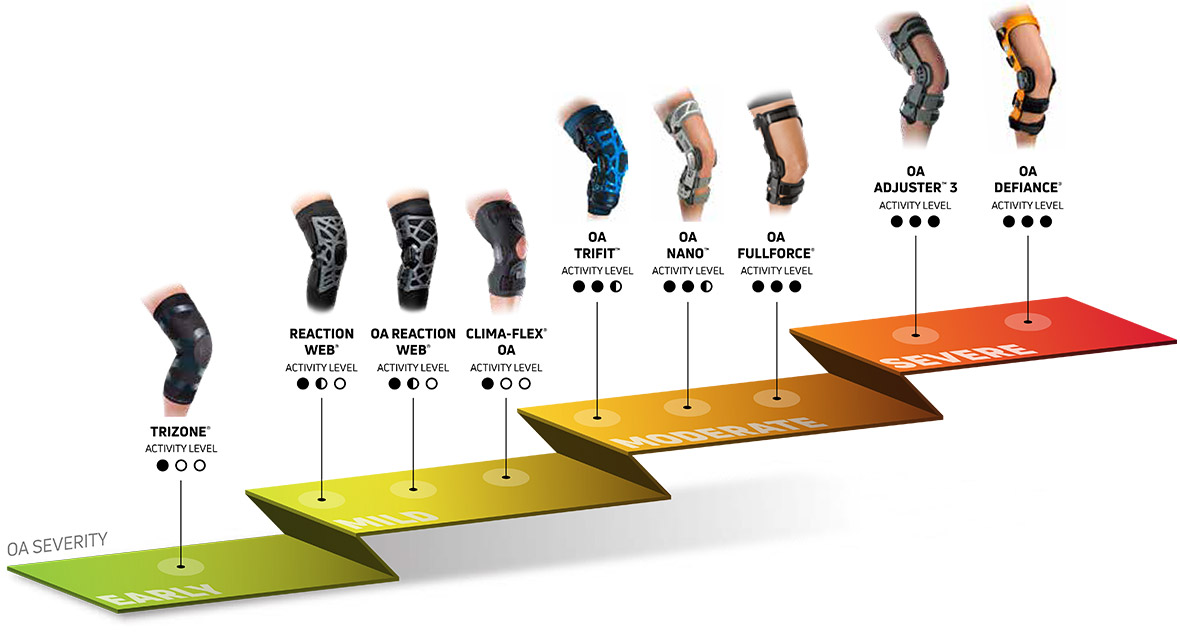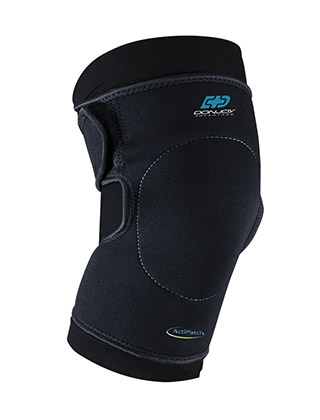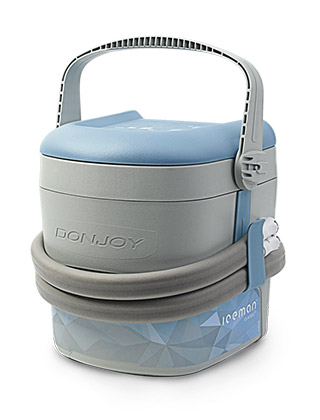Osteoarthritis (OA) is a form of arthritis in which the cartilage that cushions the ends of the bones in your joints breaks down. As the cartilage deteriorates, the bones begin to rub against each other instead of gliding smoothly, causing joint pain, stiffness and inflammation. OA pain may range from mild soreness and aching with movement to severe pain even during rest; because OA is a progressive disease, symptoms may become more severe over time.
According to the Centers for Disease Control, OA affects 32.5 million adults in the United States, and experts project that the prevalence of self-reported, doctor-diagnosed arthritis will increase from 47.8 million in 2005 to nearly 67 million by 2030. There is no cure, but joint pain and stiffness can be successfully treated, so you can get back to the activities you enjoy.
To help you better understand OA and the various treatment options, let’s clear up some common myths about the disease.
Myth: Osteoarthritis is inevitable as you get older.
It’s true that the likelihood of developing OA rises as you get older and the amount of wear and tear on your joints adds up. However, not everyone gets OA as they age.
OA also affects some younger people. Your genetics, anatomy, previous injuries and lifestyle all can affect your risk of developing it. Obesity is another consideration, since excess weight puts additional pressure on your joints, especially your knees. Losing weight can help reduce the demand on the joints.
You can take steps to reduce your risk by maintaining a healthy weight, exercising regularly and eating a healthy diet. Bracing and footwear can help provide additional support and redistribute pressure on your joints.
Myth: Exercise makes OA symptoms worse.
It may sound counterintuitive, but activity is one of the best treatments for painful joints. The right types of exercise can relieve inflammation and stiffness, increase your range of motion, and help you control your weight – all of which can help you get moving more comfortably. Moreover, exercise helps to strengthen the muscles around the joints, which in turn can make movement easier.
Generally speaking, choose low-impact activities that you can enjoy without putting too much stress on your joints. Try walking, cycling, swimming or dancing. Meet friends for pickleball or tennis. For mind and body benefits, look into tai chi, yoga and Pilates. Talk to your doctor about which types of exercise might be better for you.
Also, consider wearing a brace to help support your joints during exercise. Bracing can help stabilize the joint, reduce pain1 and build stronger muscles. FULLFORCE™, DonJoy's lightweight OA knee brace, offloads the affected compartment of the knee while reducing ligament strain, helping patients to be active with less pain.

For more information and tips to help keep you moving, visit our article.
Myth: You just have to live with OA pain.
You don’t have to live with the pain and limitations of OA. Various treatments can help decrease pain and swelling and make it easier to perform everyday activities. These include:
- Medications including nonsteroidal anti-inflammatory drugs (NSAIDS) available over the counter (such as Motrin) or by prescription.
- Topical treatments applied to the skin that contain pain-relieving ingredients such as capsaicin or lidocaine available in stores or by prescription.
- Pulsed shortwave therapy to help with pain relief. Our EME Knee Wrap powered by ActiPatch® (pulsed shortwave therapy) technology uses sensation-free electromagnetic pulses that penetrate deep into soft tissue to help calm hypersensitive nerves and relieve pain cause by musculoskeletal injury and osteoarthritis. shortwave therapy) technology uses sensation-free electromagnetic pulses that penetrate deep into soft tissue to help calm hypersensitive nerves and relieve pain cause by musculoskeletal injury and osteoarthritis.
- Cold therapy to help reduce painful inflammation and swelling. Cold packs, wraps and sleeves make it easy to apply cold therapy to affected areas.
- Heat therapy to provide deep, moist heat to soothe and relax sore muscles and joints.
- Physical therapy to help reduce pain, swelling and stiffness and help improve mobility.
Pictured: DonJoy® Advantage EME Knee Wrap / DonJoy® IceMan CLASSIC3™
In addition, studies have shown that wearing an OA brace can increase daily functions and decrease pain1. People diagnosed with OA who wear a knee brace will generally feel better in the morning, be more active during the day, and rest more comfortably at night; some may also lose weight. They may also be able to reduce the use of NSAID medications for pain.
DonJoy® makes a variety of braces to specifically to aid in treating the symptoms of OA. Through a process called “off-loading” or shifting, these OA braces help relieve pain by redistributing the weight-bearing load from the damaged part of the knee to a stronger area.
Myth: Joint replacement surgery doesn’t have good outcomes.
If non-surgical treatments aren’t effective in relieving joint pain, your doctor may recommend surgery to replace the damaged joint with an artificial implant. Today, modern artificial joint implants are designed to be much more successful than in years past. Both the implants and the surgical techniques use advanced technology and are designed to last for several decades.
- EMPOWR 3D Knee® is the only total knee implant designed specifically to recreate the dual-pivot natural motion pattern of a healthy knee. In one clinical study, patients had less pain when walking compared to traditional non-conforming knees. These patients also participated in very active activities such as impact sports more regularly.2
- EMPOWR Acetabular™ System allows your surgeon to accommodate natural differences in hip anatomy. The system’s larger head is designed to aid in enhanced joint stability and provide a greater range of motion.3
- AltiVate® Anatomic CS EDGE® is a stemless shoulder designed to preserve more bone and be less invasive than traditional shoulder implants.
Most patients will experience some temporary pain in the replaced joint. Remember the body is adjusting to the new joint and the tissues around the joint are healing. For more information on what to expect for your surgery, visit: https://www.djoglobal.com/patient-resources/articles/surgery-expectations-patient-education
Find a surgeon in your area: https://www.djoglobal.com/our-brands/djo-surgical/surgeons/locator
Myth: You will have to live with permanent restriction following surgery.
Another common misconception is that you will have to live with permanent physical restrictions after surgery. Due to advanced technology, joint replacement surgery is less invasive than it previously was, and with your doctor’s recommendation, you may even be able to return home same day or the day following your procedure.4
For many patients, joint replacement surgery results in pain-free return to activities. Most patients can return to their usual activities within 4 to 6 months per the physician’s protocols and with the help of physical therapy, braces, and cold therapy.
- VersaROM® Hip Brace is low-profile, easy to use, and helps deliver effective, functional ROM restriction in precise 15 degree increments.
- UltraSling® PRO takes the next step in providing comfort, compliance and convenience to help improve the post-operative experience for you.
- ICEMAN CLASSIC³® cold therapy unit helps reduce pain and swelling, speeding up rehabilitation.
If you have OA symptoms, talk with your doctor. Together, you can determine the best course of treatment to get you moving comfortably again.
For more information on OA, check out our article.
- https://www.arthritis.org/health-wellness/healthy-living/managing-pain/j...
- Sandberg, Rory, et al. "Dual-pivot bearings improve ambulation and promote increased activity levels in Total knee arthroplasty: A match-controlled retrospective study." The Knee 26.6 (2019): 1243-1249.
- Burroughs B, et al. Range of motion and stability in total hip arthroplasty with 28-, 32-, 38- and 44-mm Femoral Head Sizes In Vitro Study. J Arthroplasty. 2005;20(1):11-19.
- https://www.pbmchealth.org/news-events/blog/misconceptions-about-joint-r...
ActiPatch® is a registered trademark of BioElectronics Corporation.
The opinions expressed are independently prepared and for informational purposes only. They are not necessarily indicative of the views of any other party.

